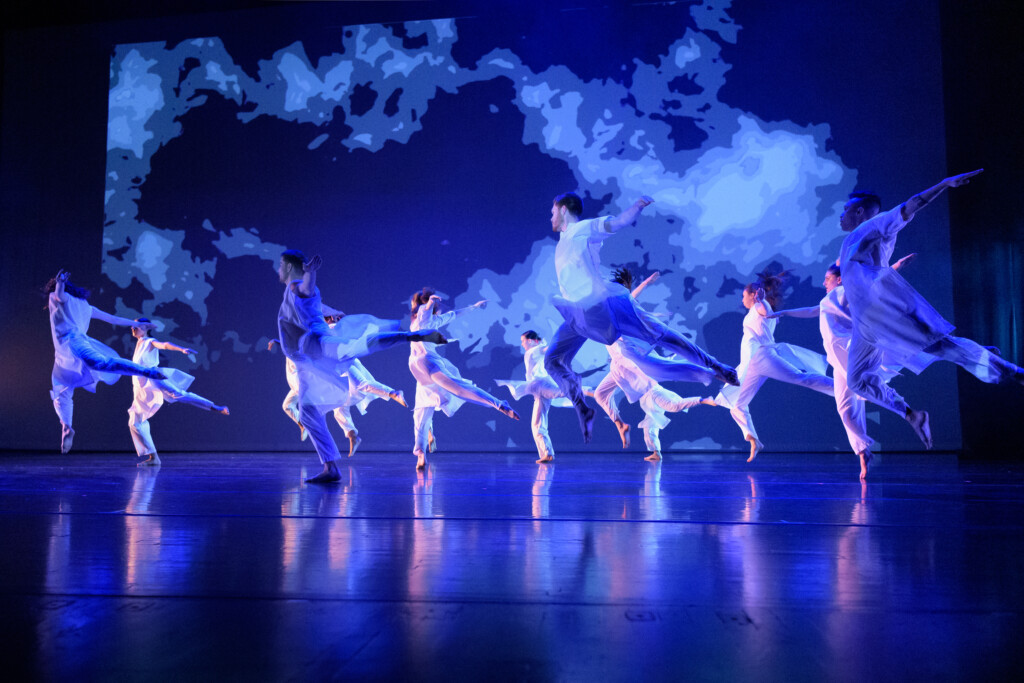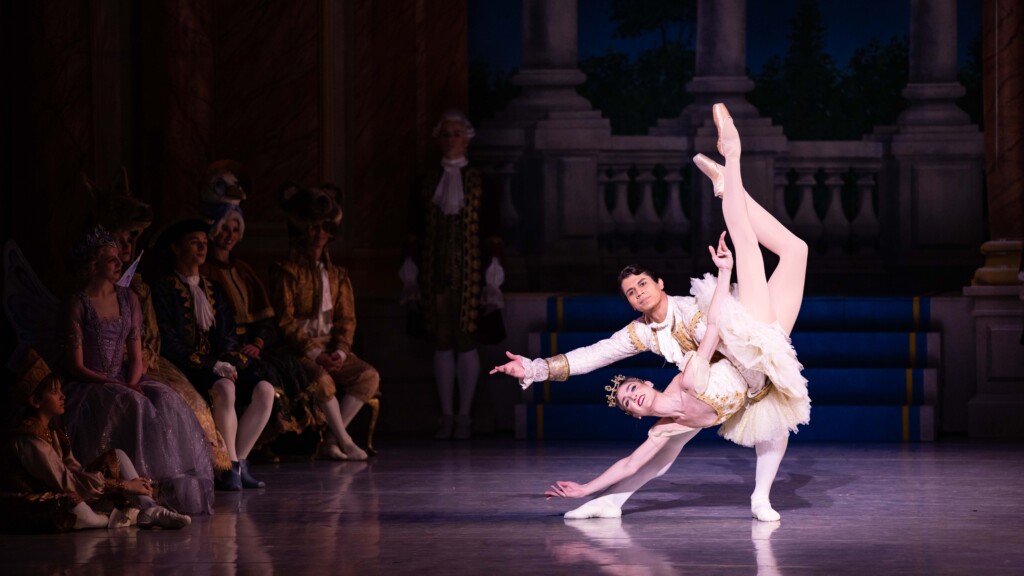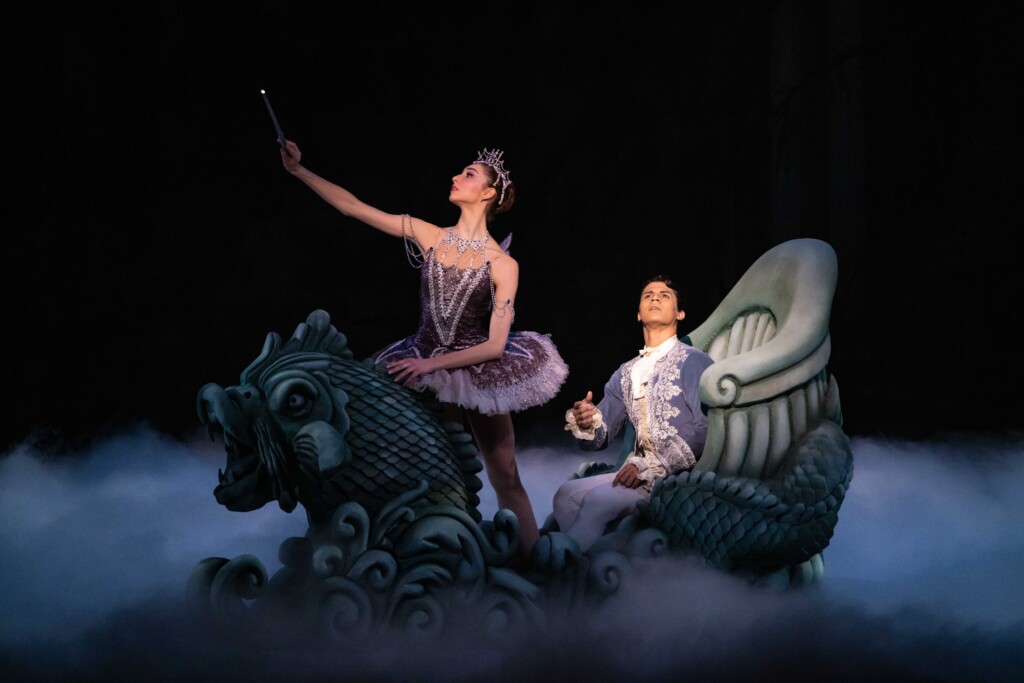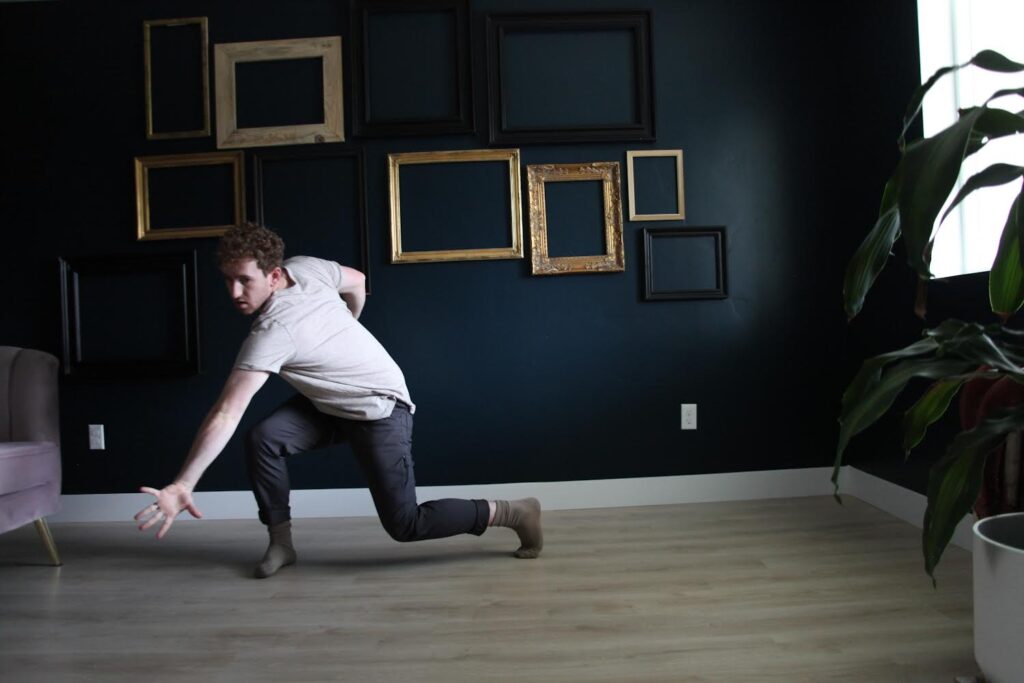BALLET WEST: SLEEPING BEAUTY
EDITOR’S NOTE: This Ballet West review is written by Chris Myers of Argyle Arts.
In ballet, opera, theater, and even the classical concert world, there are a number of challenges that arise when presenting what might be considered an “historically accurate” or “original practice” version of a work.
But perhaps the most prominent is this: it is impossible for audiences to leave their 21st-century experience at home.
We can’t hear Mozart with ears that haven’t heard Wagner (or John Williams or The Beatles). And we can’t see a Petipa/Tchaikovsky ballet with eyes that haven’t seen Jerome Robbins, Beyoncé, or even Star Wars. Moments of theatrical spectacle that would have blown away a 19th-century audience are far more likely to elicit eyerolls than gasps from an audience used to Disney theme parks and touring productions of Wicked.
It was this tension between tradition and contemporary taste that most clearly marked Ballet West’s production of Sleeping Beauty at the Capitol Theatre.
The Sleeping Beauty began in 1888 as the brainchild of Ivan Vsevolozhsky, who approached composer Peter Tchaikovsky about composing music for a fairy tale ballet. Though his only prior ballet, Swan Lake, had encountered only a lukewarm reception, Tchaikovsky accepted the commission. The original proposed subject was Undine, a novella by Friedrich de la Motte Fouqué which would later go on to inspire Hans Christian Anderson’s The Little Mermaid and Antonín Dvořák’s Rusalka.
However, the creative team soon decided that Charles Perrault’s La Belle au bois dormant (The Sleeping Beauty of the Woods) would be a better story choice. In structuring the plot of the ballet, Tchaikovsky drew on versions of this tale by both Perrault and the Brothers Grimm. Vsevolozhsky decided that, in order to appeal to audiences as much as possible, the show should also include other beloved fairy tale characters. And so it is that we encounter cameos from Beauty and the Beast, Mother Goose, Little Red Riding Hood, Puss in Boots, Tom Thumb, and several other favorites.
Marius Petipa, the 70-year-old ballet master of the Russian Imperial Ballet, was enlisted to choreograph the new work — thus beginning one of history’s great composer-choreographer collaborations, which would continue with 1892’s The Nutcracker and the (finally) successful 1895 restaging of Swan Lake.
Unlike in opera, where the composer generally controls the artistic development of the work, Petipa and Tchaikovsky’s collaboration more closely resembled that of a modern film director and score composer. Petipa reviewed the storyline and sent Tchaikovsky detailed descriptions of what was required for each scene — tone, narrative beats, and even tempo, meter, and number of bars for each phrase and section.
The resulting ballet premiered in January 1890, but Tchaikovsky didn’t live long enough to see it (and his two other ballets) become unqualified successes and the core of the ballet repertoire as we know them today. He died in 1893, less than a year after the premiere of The Nutcracker. By the turn of the century, The Sleeping Beauty became one of the Imperial Ballet’s most-performed works, but it wasn’t until the 1920s that it gained international acceptance.
The Ballet West production draws heavily on the work’s artistic history. Pamela Robinson-Harris’ and Mark Goldweber’s staging make liberal use of Petipa’s classic choreography. Much has been made by the company of their new props and sets, which are beautifully rendered after designs by Alain Vaes, in a style which would not have been out of place in the 1940s (or even, perhaps, at the work’s 1890 premiere). Even some of the brief moments of technical stagecraft are largely consistent with what one might have expected in Imperial Russia — the pyrotechnic effects accompanying moments of magic, for instance, were reminiscent of classic theatrical flash pots.
The result is a production which feels like a tasteful and well-researched historical recreation. If there are few surprises or moments of epiphany in the performance, that is by design. This is classic 19th-century Russian ballet brought to life for our 21st-century eyes.
The cast, led by Katlyn Addison as Princess Aurora, gave a textbook performance, and the Ballet West Corps performed with their usual level of precision and synchroneity. The Ballet West Orchestra rendered Tchaikovsky’s lyrical score with superb artistry under the baton of Jared Oaks. Of particular note were performances by concertmaster Aubrey Woods, principal cello Lauren Posey, and principal oboe Luca de la Florin. Each of these musicians delivered their frequent and prominent solo passages with gorgeous tone and a passionate lyricism that made it difficult to believe it was their second full performance of the day.
Fitting for its upcoming 60th anniversary season, Ballet West announced the 2023-24 productions which will include three full-length story ballets, three world premieres, a KSL-TV broadcast and historic masterpieces.
“For this season, I wanted to honor the legacy of our founder, Willam Christensen, a visionary committed to the history of ballet, but also to its future,” said Adam Sklute, the company’s artistic director. “In addition, I want to pay homage to all of my predecessors in unique and subtle ways by presenting a mix of audience favorites and new creations.”
The season will open with the return of Ben Stevenson’s Dracula (Oct. 20-28), which is set to the music of Franz Liszt, as arranged by John Lanchberry. It features pyrotechnics, flying vampires, and a ghostly carriage that careens on-and-off stage.
Opening just a week later as a production honoring the legacy of Willam Christensen, the company founder, Firebird (Nov. 3 – 11) will feature a world premiere, Fever Dreams by Joshua Whitehead, Ballet West demi-soloist. Whitehead also composed the music for the work, which originally was a workshop production for Ballet West Academy students. The production, of course, includes the Christensen adaptation of The Firebird, including the famous score by Igor Stravinsky, which will be performed by the Ballet West Orchestra, led by Jared Oaks. The production includes George Balanchine’s Stars & Stripes with a score of John Philip Sousa classics, as arranged by Hershey Kay.
The company’s widely adored production of The Nutcracker will receive seven performances at Kennedy Center in Washington, D.C. (Nov. 22-25), before returning to Utah for performances in Ogden and then in Salt Lake City (Dec. 8-27).
The 2024 portion of the season will open with a reprise of Swan Lake (Feb. 9-17), as conceived and produced by Adam Sklute, after original choreography by Marius Petipa and Lev Ivanov, with additional choreography by Pamela Robinson-Harris, Ballet West principal rehearsal director, and the late Mark Goldweber.
Spring will pop as a ballet blockbuster with Love and War (April 12-20, 2024), including a Utah premiere of Blake Works I, set by William Forsythe, among the world’s most foremost choreographers, as a work for the Paris Opera Ballet in 2016, with music taken from James Blake’s song catalog. The company also will reprise its production of Red Angels, choreographed by Ulysses Dove with music by Richard Einhorn. Four dancers and an electric violin, played by the original interpreter, Mary Rowell, one of only two people in the world to play this score, will perform. Rounding out the bill is Kurt Jooss’s 1932 work The Green Table, with a score for two pianos by Frederick Cohen.
The company’s Family Classics Series will return with Beauty and the Beast (March 29-30, 2024), conceived and produced by Sklute and choreographed by Robinson-Harris with Peggy Dolkas. Performed by Ballet West II and members of the Ballet West Academy, this production is designed for families and children looking for an introduction to ballet with a shortened run-time and narration. The run includes a Spanish-language narrated performance on March 30.
The annual Choreographic Festival (June 5 – 8, 2024) will highlight Asian choreographers, artists, musicians, and companies. Among the slate works are a pair of commissioned world premieres, respectively, by Caili Quan and Zhongjing Fang. The Ballet West company also will take this program on tour at The Kennedy Center (June 18 – 22, 2024).
In the current season, the company’s next production will be Snow White (April 7-8).
For more information about tickets for either the remainder of the current season or for next season, see the Ballet West website.

DANCE: RIRIE-WOODBURY DANCE COMPANY, REPERTORY DANCE THEATRE (RDT)
In January, Ririe-Woodbury Dance Company’s second show of the season once again demonstrated the vibrant chemistry of its dance artists. Here Today included a world premiere by choreographer Raja Feather Kelly as well as two works that had their foundations in earlier renderings which wefe presented in filmed presentations during recent seasons.
Molly Heller’s Long View was an excellent choreographic representation of the déjà-rêvé phenomenon, which is not to be confused with déjà vu. Déjà-rêvé can take several forms — episodic in that the person recollects a specific dream, familiarly in that it connects to a much less clearer dream and the sensory like being in a dreamy state. In the earlier work, Full View brought five members of her Heartland Collective to the stage with the six Ririe-Woodbury artists. The work was a response to the pandemic, created as a series of character studies occurring in an all-green set with props opening upward to a cloud hovering above. The atmospherics for the piece were nailed through the score composed by Michael Wall and Nick Foster, well-known local musicians who also are part of the Salt Lake Electric Ensemble, a group with which Ririe-Woodbury has collaborated previously.
Prior to the beginning of this most recent show, the film of Full View was screened in the theater, setting up nicely the foundation for the premiere of Long View. The live work nicely brought in the effect of déjà-rêvé, as the dancers moved and interacted with the same props featured in the earlier work.

Rites: Come As You Are by Charles O. Anderson also premiered as a filmed composition but its restaging for the live performance at Here Today reinforced and clinched the work’s choreographic power. The restaging also expanded the number of dancers from Ririe-Woodbury’s six artists to a group including dancers from Westminster College.
The work is a superb celebration of the African diaspora of creative expression. As in its film premiere, Anderson crafted an exceptional meta-artistic commentary with precise, concise and incisive political, sociological, cultural and historical threads sewn onto a choreographic canvas enhanced by multimedia elements. The cohesion and cogency of this work are impressive, as every element fell seamlessly into its place. Notably, when Rites received its premiere on film, it also was the first work after the pandemic slammed the doors on live performances, in which a guest artist could work in studio with the Ririe-Woodbury dancers. At the time, Anderson was in a creative residency, which coincided with the Utah Museum of Fine Arts’ special exhibition Black Refractions: Highlights from the Studio Museum in Harlem. Clad in acolyte white robes, the dance artists magnified Anderson’s artistic statement punctuated by a continuously shifting palette of rhythms in its sound design.
Ririe-Woodbury dancers always respond on point to Kelly’s choreography. Pantheon, a work inspired as a follow-up to Igor Stravinsky’s The Rite of Spring ballet (1913), has received exceptional performances on the company’s stage. The latest work, Scenes for an Ending picks up almost exactly where Pantheon left off, exuding with Kelly’s wonderful play and riffs on Warholian pop culture aesthetics, proving why Kelly has stood out in the choreographer’s world for a groundbreaking perspective on the fusion of dance and theatrical design, which emphasizes dance as both a physical and visual art form.
Ririe-Woodbury, like Ballet West, will be celebrating its 60th anniversary next season. In April, to close out its current season, the company will present To See Beyond Our Time (April 13-15), featuring an evening-length work choreographed by Daniel Charon, the company’s artistic director, with Alexandra Harbold as co-creator and dramaturg. The work is inspired by efforts to save the Great Salt Lake.
For more information and tickets, see the Ririe-Woodbury website.

Repertory Dance Theatre held two major events this winter, including its annual Regalia fundraiser and choreographer competition. As customary, the audience decides who wins the competition and receives the prize — a commission to create a complete work for RDT’s 2023-24 season. This year’s winner was Ruger Memmott, dancer and choreographer from Pleasant Grove, He danced on scholarship with the BYU’s Theater Ballet Company and then after returning from his church mission, he danced freelance in Utah and California, including with Utah’s Odyssey Dance Theatre, where he occasionally choreographed works. His choreography has been selected by the Palm Springs Desert choreography festival, the MOVE: A 24-Hour Film Festival competition by the Utah Film Festival and he was selected as the winner of the 2021 SHAPE choreography festival by SALT Dance.
In January, RDT produced its seventh edition of Emerge, which featured the company’s dance artists as choreographers. This year, each choreographer selected a local group of dancers to set their work on, in line with the company’s season theme of community. It was a straightforward delight.
More than 100 dancers were variously featured in the short works. Megan O’Brien’s Frolic brought together numerous local dancers with whom she has worked with in one form or another. Lindsey Faber’s Just A Thought featured high school sophomores from the Children’s Dance Theatre (CDT) at The University of Utah. Nicholas Cendese, RDT’s artistic associate, set two works: The Clock Resets, featuring a dozen dancers who are dance teachers at various public, private and charter schools. Meanwhile for On The Rise, Cendese also selected dancers from CDT, where he danced for six years as a teen.
An outstanding contribution came with Ursula Perry’s Cyclical Transformation, featuring members of the Brigham Young University’s contemporary dance program along with original scoring by local musician Wachira Waigwa-Stone. Daniel Do choreographed Order for members of the Altitude Dance Company. The work reflected how chaos and unexpected events (such as a pandemic) affect the order and discipline of a dancer’s life in and out of the studio. In Liefde, Elle Johansen created a lovely tribute to her grandparents Erica and Pieter Vanamerongen and their recordings of songs for Fem Dance Company. Lauren Curley’s Next, featuring music by local composer Michael Wall, was set for dance students at The Winner School while Jon Kim and Caleb Daley set Amalgamate, a work created in six hours for participants of the 2023 Winterdance Workshop, which was held the same week in which Emerge was presented.
RDT’s next production will be Flight (April 20-22), a choreographic tribute to Earth Day. The works include José Limón’s The Winged (1966), Donald McKayle’s I’ve Known Rivers (2005) and Zvi Gotheiner’s Dancing the Bears Ears (2017). For tickets and more information, see the RDT website. On Friday, April 21, RDT will sponsor a short symposium, an hour before that evening’s performance, in the Rose Wagner Center for Performing Arts, titled, Preserving Out Land, Water and Culture.
MUSIC: GINA BACHAUER INTERNATIONAL PIANO FOUNDATION! NOVA CHAMBER MUSIC SERIES, WESTMINSTER COLLEGE
The Gina Bachauer International Piano Foundation continued its 2022-23 concert series of competition gold medalists with a phenomenal solo recital featuring Changyong Shin, who took the gold medal at Bachauer in 2018. Shin displayed an impressive range of control and calm to go along with the usual demonstration of piano pyrotechnics, with a program of Mozart, Schubert, Granados and Liszt.
A delicate, silky sound in Mozart’s Fantasy in C Minor, K. 396 introduced the audience to Shin’s versatility in this eclectic exploration of the fantasy. The opening notes of the first movement in Schubert’s Sonata in G Major, D. 894 cemented the merits of a work that Schumann described as perfect in form and substance. Returning in the second half, Shin polished off the demanding journey with a serene grasp of subtle musicality while treating the audience to the virtuosic demonstration of the works, including Los Requiebros from Goyescas, a piano suite composed by Enrique Granados; the charming Rachmaninoff flora pair of Lilacs, op. 21, no. 5 and Daisies, op. 38, no. 3, and Liszt’s Réminiscences de Don Juan, which references Mozart’s opera Don Giovanni.
With a sustained standing ovation from the audience, Shin returned to offer a perfect nightcap of soothing reverie: Debussy’s Clair de Lune and a spectacular rendering of Schumann’s Träumerei.
With the Fry Street Quartet’s marvelous plunge into building gutsy programming that juxtaposes chamber literature from the existing classical canon with a substantial representation from current composers, NOVA Chamber Music Series’ three concerts during the winter add to marking this season’s 45th anniversary commemoration as an exciting sign of upcoming concerts and the 2023-24 season. In January, the season’s second Gallery concert in the Utah Museum of Fine Arts was an all-string affair with the Fry Street Quartet and guest violist Brant Bayless. Two Augusta Read Thomas works for solo viola — Capricious Toccata: Dandelion Sky and Pulsar — were fleshed out confidently in their imagistic renderings by Bayless.
The Fry Street Quartet’s finely honed reading of Iman Habibi’s Beloved of the Sky, a 2014 work inspired by the paintings of Canadian artist Emily Carr, placed the work appropriately in the museum’s surroundings. Likewise, the quartet elucidated all of the syntactical strands of the melody’s treatment in Jessie Montgomery’s Source Code (2018). The same sense of youthful exuberance that permeated the other works on the program came through in the reading of Mozart’s String Quintet in G Minor, K. 516, which Bayless joining on the additional viola part.
Two other concerts highlighting the broad Connect theme also took place. In February, Connect with Hope brought works by three current composers and a Beethoven string quartet. Percussionists were highlighted in two of the works which added plenty of visceral intensity. From Ellen Reid, who won the Pulitzer Prize for Music in 2019, Fear/Release is a 2017 work for percussion quartet built around a five-note phrase. Percussion works on NOVA concerts always are sure-fire winners and Reid’s contribution continued the streak, with percussionists Keith Carrick, James Michael Sammons, Eric Hopkins and Michael Pape extracting all of the proper hyper-resonating effects from the work.
Am immensely complex work for two pianists and two percussionists, Sidney Boquiren’s Book of Mourning, Quarto III: Tala was performed in tour de force style. The work arises as an expression of mourning — specifically for the victims of the Parkland, Florida school shootings in 2018 — but it also becomes a touch point of hope that such tragedies can be prevented. Waves of emotion are documented precisely, with pianists Kimi Kawashima and Mitchell Giambalvo and Carrick and Hopkins on percussion providing the clarifying features Boquiren embedded brilliantly in this work. Similarly, Maja Ratkje’s Tale of Lead and Light for string quartet (Karen Wright, Evgenia Zharzhavskaa, Brant Bayless, Pegsoon Whang) highlighted a sobering contemplative response to the Norway mass shootings in 2011. The concert closed on a supreme note with the Fremont String Quartet (Utah Symphony musicians Madeline Adkins, Claude Halter, Brant Bayless and Matthew Johnson) on Beethoven’s String Quartet in F Major, op. 59, no. 1.
Earlier this month, Connect with Mystery included a world premiere of Parallel Play by Utah composer Miguel Chuaqui, an urbane and witty romp for winds and percussion, with the perfect punctuation ending by the bassoonist. Fry Street Quartet’s second violinist Rebecca McFaul once again demonstrated why she and her colleagues are first-class Bela Bartók interpreters. Joined by pianist Mayumi Matzen, her rendering of his Second Violin Sonata was outstanding in its mercurial flips of emotional character and its rakish writing. Meanwhile, pianist Viktor Valkov was quintessentially elegant in C.P.E. Bach’s Württemberg sonata. Valkov returned for the closing work, joined by violinist Alex Woods and cellist Andrew Larson, for a splendid interpretation of one of the best trios in chamber literature — Beethoven’s Ghost Trio.
Connect with the West, NOVA’s April 16 connect will feature a new commission, Lek, by Nicolás Lell Benavides, along with Songs from Letters by Libby Larsen, a work celebrating the life of Calamity Jane; Raven Chacón’s (Bury Me) Where the Lightning [Will] Never Find Me and Roy Harris’ Piano Quintet. For more information about tickets, see the NOVA Chamber Music Series website.
Westminster College’s performing arts program consistently offers programming that marks the best frontiers of today’s composers. Last month, the concert In Counterpoint was a multi-course ASMR musical feast, sponsored in conjunction with the Mundi Project. The program featured music by Caroline Shaw and Andrew Yee (two of the most widely known current composers and musicians on the American and international scenes). along with selections from the 17th and 18th centuries by Barbara Strozzi and Antonio Vivaldi. Joining various string musicians (Notion Kishi, John T. Posadas, Karen Wyatt) — including Shaw on viola and Yee on cello — there were three sopranos (Hillary Koolhoven, Emily Nelson, Jin-Xiang Yu), harpsichordist ( Haruhito Myagi), pianist (Kimi Kawashima), percussionist (Indigo Cook) and conductor (Jane Fjeldsted) who led the Westminster Singers.
There were many fascinating bits of tonal textures, instrumental effects and musical architectural designs that fit like a natural puzzle. The Strozzi songs sounded luscious plucked from their faraway timeline and situated next to delightful bits such as Shaw’s Boris Kerner, which was performed by Yee on cello and Cook on flower pots. A Vivaldi trio sonata was the perfect aperitif in the second half of the program which featured several Shaw works — including Its Motion Keeps, with the composer on viola and the Westminster Singers. The closing piece was Shaw’s whimsical confection Limestone and Felt, performed by Shaw and Yee, who epitomize the perfect friendship and gifts of collaboration.
For more information about upcoming performing arts events, see the Westminster College website.









